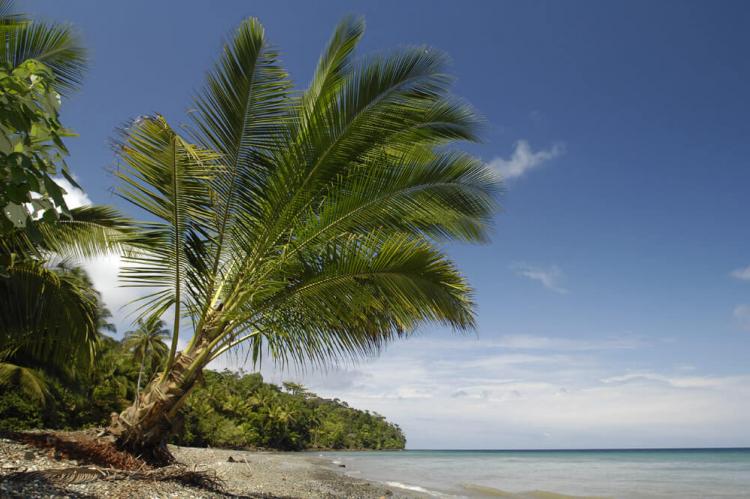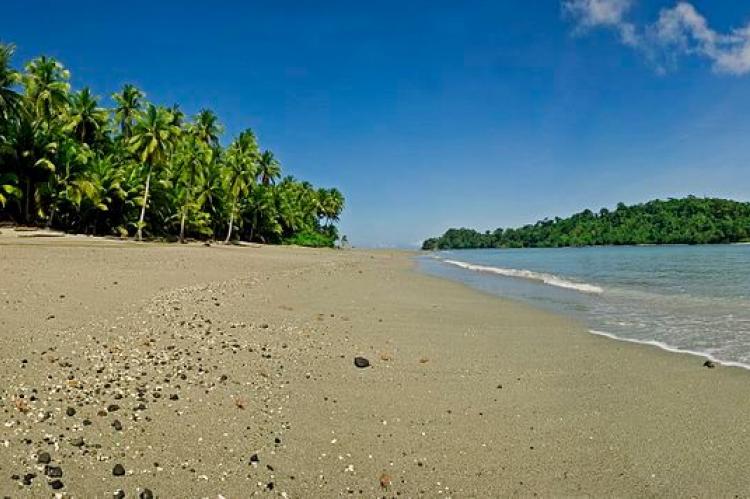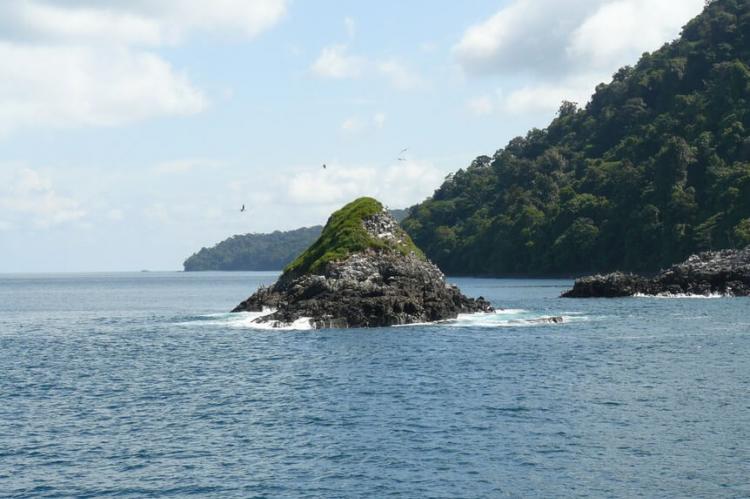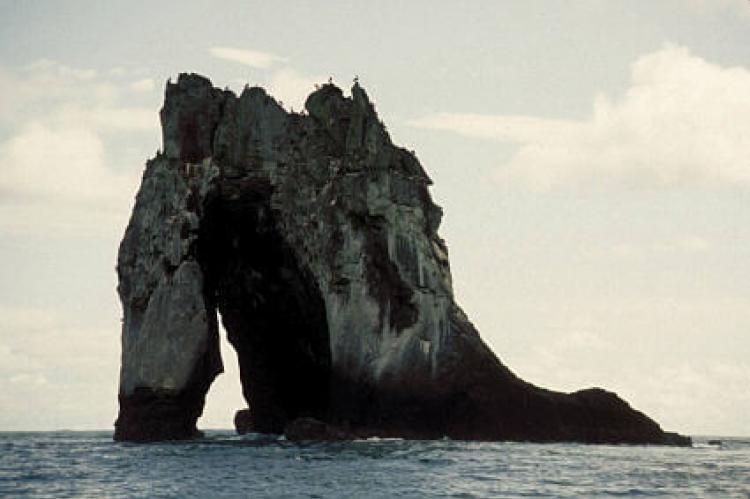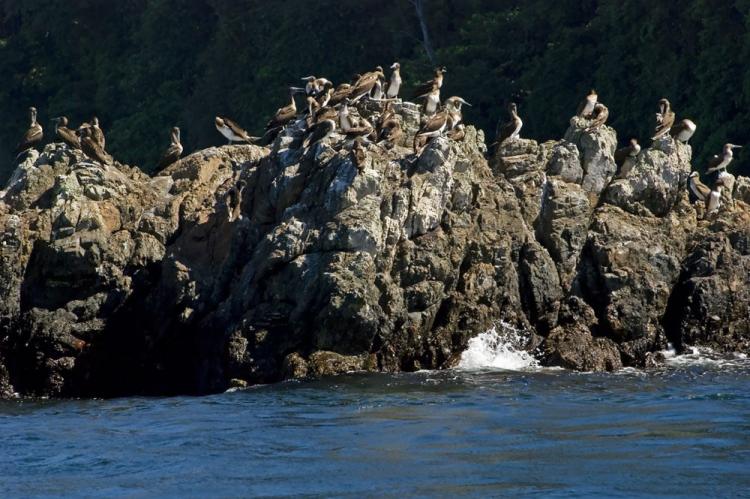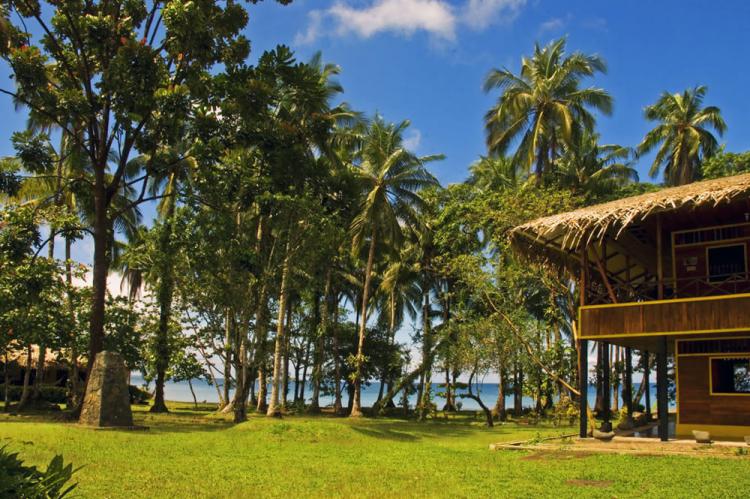Gorgona Island: Colombia's Ecological Jewel in the Pacific
Gorgona Island is a biodiverse gem off Colombia's Pacific coast. Its fascinating history spans indigenous cultures and colonial exploration. Isolated from the mainland, Gorgona is home to the protected Gorgona Natural National Park, preserving its unique ecology.
Gorgona Island: Colombia's Ecological Jewel in the Pacific
Situated approximately 28 kilometers (17 miles) off the Pacific coast of Colombia, the island of Gorgona is a true ecological gem. It boasts a rich biodiversity and a fascinating history that spans indigenous cultures and colonial exploration. This remote island, part of Colombia's Insular Region, is a world unto itself, isolated from the mainland by the vast expanse of the Pacific Ocean.
Gorgona is home to Gorgona Natural National Park, a protected area established in 1984 with the primary objective of preserving its unique ecological treasures. From the dense tropical rainforests that cloak its mountainous interior to the vibrant coral reefs that teem with marine life offshore, this island is a biodiversity hotspot of global significance.
Recognized for its exceptional natural beauty and scientific importance, Gorgona Natural National Park has become a beacon for conservation efforts, attracting researchers, environmentalists, and eco-tourism enthusiasts worldwide. This island paradise offers a rare opportunity to explore and appreciate nature's wonders while shedding light on the region's rich cultural heritage.
With its diverse ecosystems, endemic species, and captivating history, Gorgona Island is a powerful reminder of the importance of preserving our planet's irreplaceable natural wonders for generations to come.
Geographical Features
Gorgona Island measures 9 kilometers (5.6 miles) in length and 2.5 kilometers (1.6 miles) in width, with a total area of 26 square kilometers (10 square miles). Its terrain is predominantly mountainous, with Cerro La Trinidad towering as the highest peak at 338 meters (1,109 feet) above sea level. A dense, humid jungle blankets the island's interior.
Southwest of Gorgona lies the much smaller Gorgonilla Island, covering an area of 49 hectares (121 acres). The Paso de Tasca strait separates these two islands, a narrow channel approximately 400 meters (1,300 feet) wide. Further west, several rock islets dot the seascape, including the largest one called "El Viudo" (the Widower), dot the seascape. To the north, the Rocas del Horno (Oven Rocks) rise almost vertically from the ocean, separated from Gorgona by the Bocas de Horno (Oven mouths).
Oceanographic Wonders
Gorgona Island is renowned worldwide for its exceptional diving opportunities, abundant settings and diverse marine life. The oceanographic characteristics of its waters, including temperature, salinity, and transparency, create an ideal environment for the formation of coral and rocky reefs, which provide shelter and sustenance for a wide array of species.
Historical Significance
The island's history is steeped in both indigenous and colonial narratives. Archaeological evidence suggests that the indigenous Kuna or Cuna people of Urabá (Colombia) and San Blas (Panama) were the first settlers on Gorgona, leaving behind remains dating back to 1300 AD.
In 1524, Spanish conquistador Diego de Almagro became the first European to discover the island, naming it San Felipe. Three years later, Francisco Pizarro, during his second expedition to Peru, took refuge on Gorgona while awaiting provisions and preparing for the conquest of Peru. Struck by the island's abundant snake population, Pizarro renamed it Gorgona, likening the snakes to the Gorgons, female monsters from Greek mythology.
During the first half of the 20th century, Gorgona remained largely uninhabited until 1959, when it was converted into a penal colony, housing Colombia's most violent criminals. Surrounded by shark-infested waters, the island earned the nickname "Colombia's Alcatraz Island." It functioned as a high-security prison until its closure in 1984, following a campaign by scientists, environmentalists, and human rights advocates.
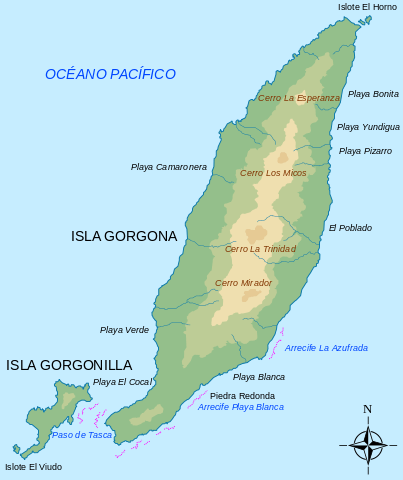
Map depicting Gorgona Island
Gorgona Natural National Park
In 1984, Gorgona Island was officially designated as Gorgona Natural National Park, with the primary objective of preserving its endemic species, diverse tropical forests, and coral reefs offshore. The park encompasses a total maritime area of 620 square kilometers (240 square miles).
Gorgona boasts a rich hydrographic system, with numerous water currents flowing towards the ocean, fueled by frequent rains and high humidity. The island is home to approximately 25 perennial streams and 75 seasonal streams during the rainy season, and two lakes: La Cabrera and Tunapurí.
Gorgona's climate is tropical, with an average temperature of 26°C (79°F) and an average humidity of 90%. Intense rainfall and misty days are frequent, with an estimated annual rainfall of approximately 7,000 millimeters (275 inches).
Biodiversity Hotspot
Gorgona Island's dense tropical rainforest has been isolated from the mainland for thousands of years, providing a sanctuary for unique species, including the endemic blue anole (Anolis gorgonae). However, this species is currently endangered due to predation by the introduced western basilisk (Basiliscus galeritus), a large lizard species.
The island is famous for its diverse snake population, which includes three venomous species: the much-feared Bothrops asper and two coral snake species, Micrurus dumerili and Micrurus mipartitus. Several non-venomous snakes, such as the boa constrictor, Ecuador Sipo (Chironius grandisquamis), mussurana (Clelia clelia), and various tree snakes, also call Gorgona home.
Terrestrial mammals on the island include the introduced white-headed capuchin, brown-throated sloth, Gorgona spiny rat, and the agouti rodent. Additionally, over a dozen species of bats can be found on Gorgona.
While the island's reptile predators have likely contributed to a relatively low diversity of terrestrial birds, endemic subspecies such as the black-crowned antshrike (Thamnophilus atrinucha gorgonae), bananaquit (Coereba flaveola gorgonae), and red-legged honeycreeper (Cyanerpes cyaneus gigas) can be found here.
The surrounding waters are a haven for marine life, including the blue-footed booby, brown pelican, and magnificent frigatebird. The island also serves as a critical breeding territory for the brown booby (Sula leucogaster etesiaca) population.
Notably, Gorgona is a popular whale-watching destination, as humpback whales and their newborns pass through the area annually from August to October during their southward migration. Other marine inhabitants include hammerhead sharks, whitetip reef sharks, sea turtles, whale sharks, and moray eels.
Conservation and Research
Gorgona Natural National Park is vital in preserving Colombia's natural heritage and facilitating scientific research. The park's unique ecosystems and diverse flora and fauna provide ample opportunities for researchers to study various aspects of biodiversity, ecology, and conservation.
Ongoing efforts by park authorities, in collaboration with local communities and conservation organizations, aim to strike a balance between protecting the island's delicate ecosystems and promoting sustainable tourism activities that can generate economic benefits while raising awareness about the importance of environmental stewardship.
Gorgona Island stands as a testament to the incredible richness of Colombia's natural wonders and the urgent need to protect these ecological treasures for future generations.
